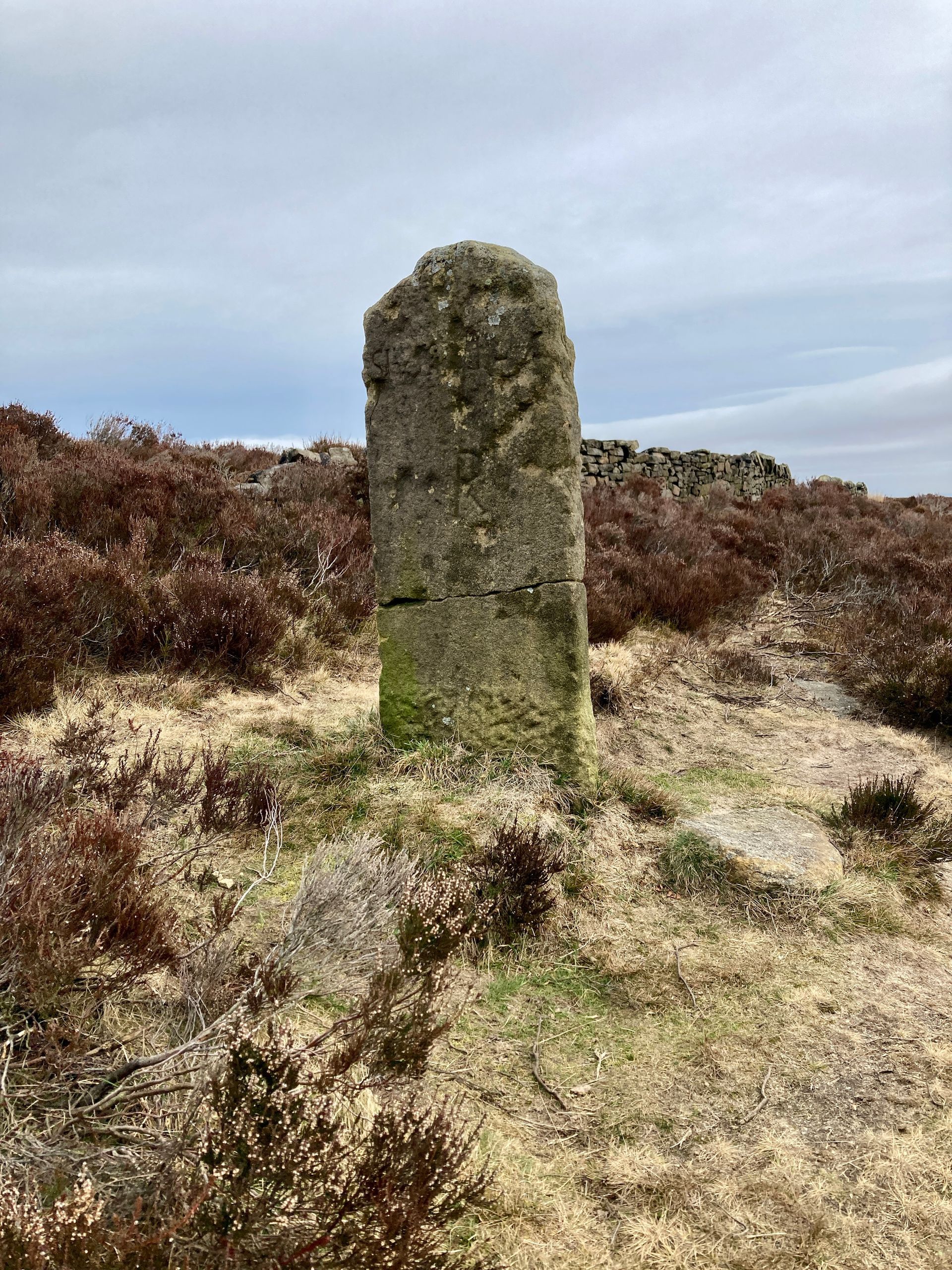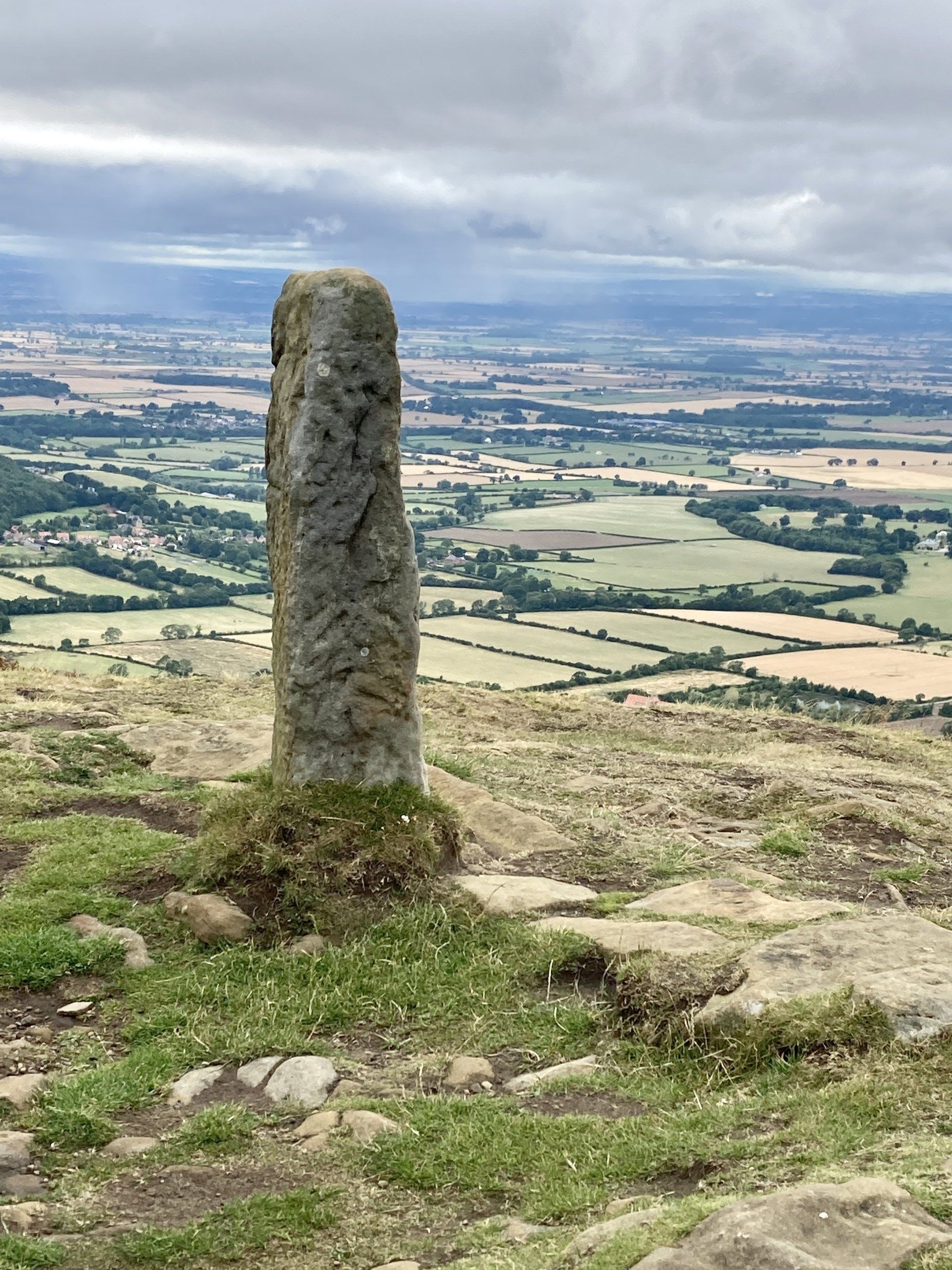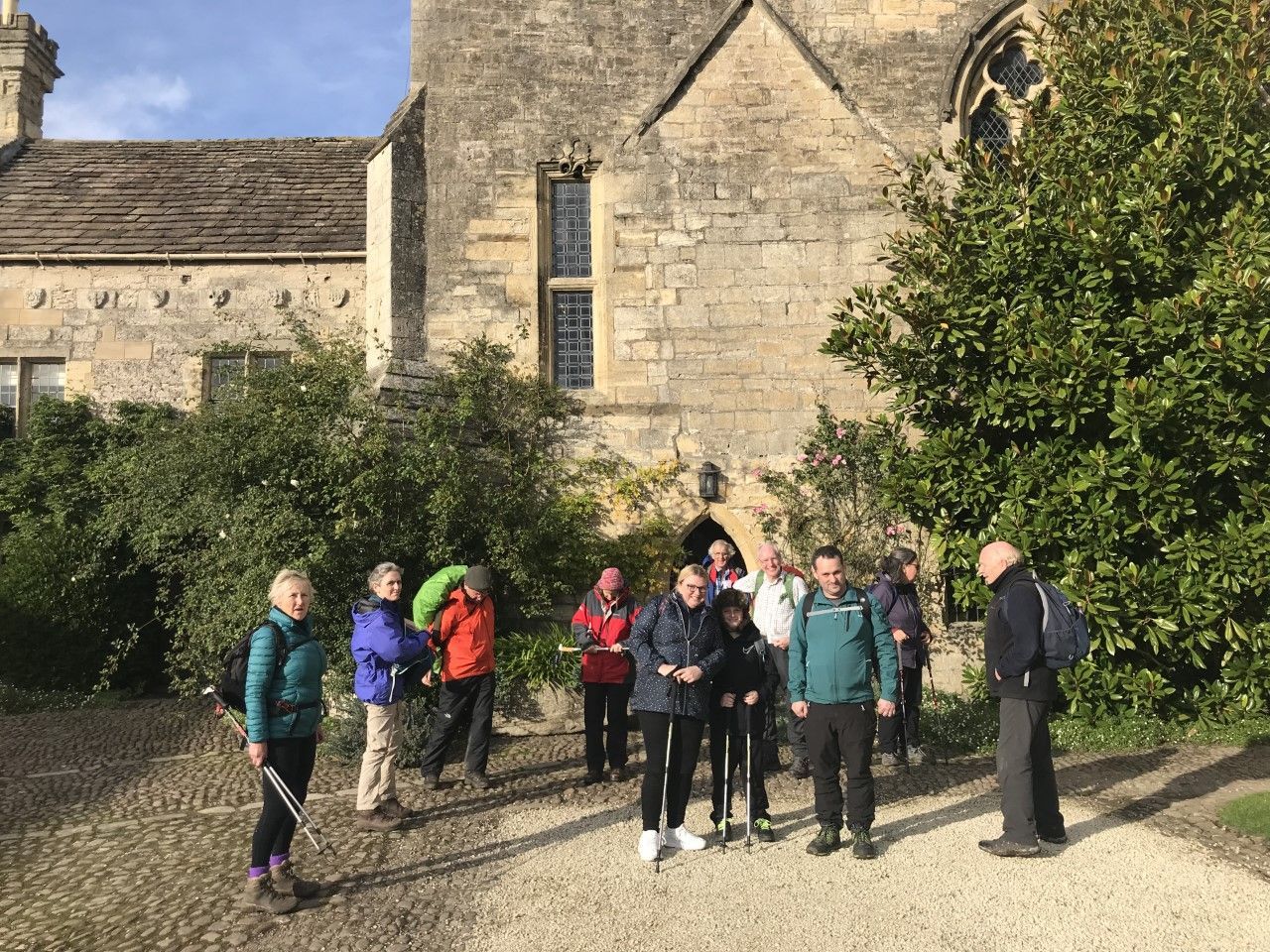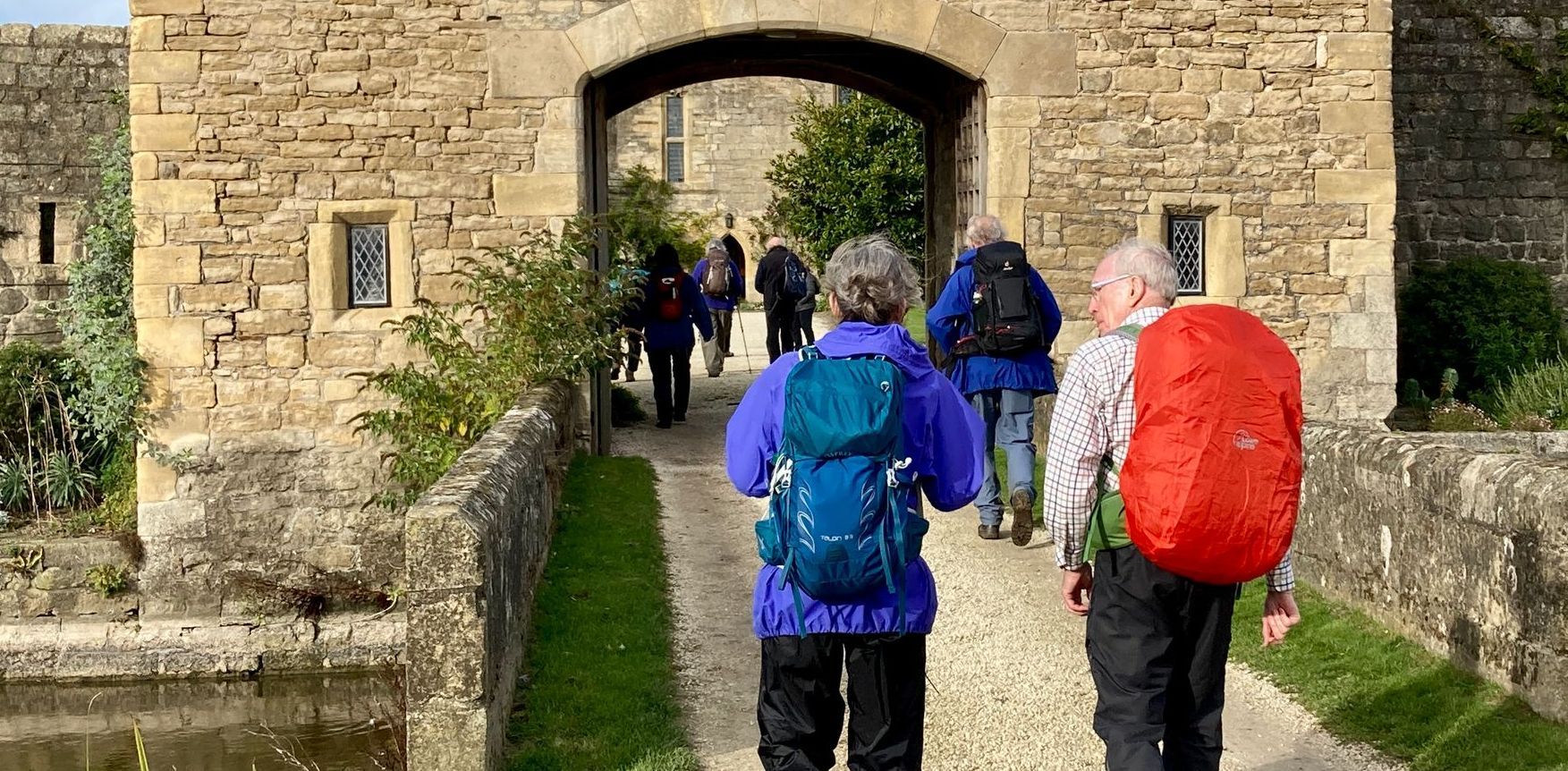PILGRIMAGE: JOURNEY OR DESTINATION?
Pilgrimage, for Christians in the British Isles, is an ancient and deep-rooted experience which links us with our ancestors in centuries gone by. In this article TJ Guile, Chairman of the English Catholic History Association, asks which is more important: the journey or the destination, or is it both combined?
The article was first published on the website of the ECHA and is reproduced here with kind permission.

Britain is steeped in Christian history with its culture, heritage, language and architecture rooted in Christian tradition. Holy places from long ago may still resonate with travellers, pilgrims and visitors to England and Wales today. Medieval English and Welsh people were strongly attached to veneration of the Blessed Virgin Mary and the saints and that they were known to go on pilgrimages both within the country and abroad. The tradition of the cult of the saints and pilgrimage to holy places is historically evidenced and was largely suppressed at the time of the English Reformation in the sixteenth century.
This tradition of pilgrimage has been revived in modern times and is now part of the rich tapestry of our history, archaeology, faith and heritage. Alongside those who would identify with the Christian community at large, lots of people have no religious beliefs at all and may indeed be antagonistic to organised religion. However, many of them may have an ambivalent attitude to places, people and events with connotations of religion, faith, spirituality or belief. They clearly ‘mean something’ and can engender enquiry or even fascination. The influence of the church may have waned substantially in Britain and other countries in western Europe but pilgrimage is still popular with growing numbers of people.
The words ‘pilgrim’ and ‘pilgrimage’ come from the Latin perigrinus and perigrinatus denoting a stranger. This must come from the fact that strangers might travel through a neighbourhood on their way to a destination. We get the word ‘saunter’ from the French “Sant Terre” or Holy land indicating that pilgrims were travelling to the holy places of present-day Israel. The verb to canter comes from Canterbury as pilgrims in medieval Britain might travel on horseback.

The British Insular Christians, sometimes denoted as ‘Celtic Christians’ by some observers, were familiar with priests and monks travelling to a holy place, often on the fringes of these islands, to have a spiritual experience. These experiences may have been connected to penitential rites and may also have been by way of atonement for perceived sins. Iona is one famous example of such a holy place off the coast, but there were many more in Scotland, Ireland and Wales during this time.
In the medieval period it was not so much the journey which was important though hardships and deprivations along the way, were generally seen as a component part of the spiritual experience. One had to give something up to get something back. Giving up home comforts for a time was a way of advancing one’s spiritual pilgrimage and a way of showing one’s dedication to God and to his holy saints and martyrs. At first, local shrines in one’s own immediate neighbourhood did not count as a pilgrimage but as time went on these were also recognised as a pilgrimage type experience. The experience of pilgrimage was a redemptive one involving being shriven by a priest and undergoing various types of penance such as giving something up or doing spiritual or physical activities. The Christian tradition of Lent (originally meaning a time of the lengthening days) leading up to the most important festival of Easter, is an echo of this ancient tradition. The spring was the traditional time of year for pilgrimages to begin as roads and streams might be more easily navigable. As Chauce notes in his prologue to the Canterbury Tales, “Whan that Aprille with his shoures soote, The droghte of March hath perced to the roote.” (1) He goes on to say. “Thanne longen folk to goon on pilgrimages.” A central part of indigenous Catholicism in England or Wales was the Marian cult. The English towns and villages most noted for medieval devotion to Mary in Britain were: Walsingham in Norfolk, the primary British shrine of Mary and known across Europe; Coventry; Doncaster; Ely; Evesham; Glastonbury; Ipswich; Lincoln; Pontefract; Willesden and Worcester. Many abbeys and priories were dedicated to Mary, especially the Cistercian and Carmelite ones. Yet very many more places could be added to the list as devotion to Mary was common; most people could not travel far and needed a local place to visit on pilgrimage.
A twelfth century sermon from Santiago de Compostela for the feast of St James refers to remission of sins and redemption for the pilgrim who travels there from far away places. It was seen as healing and medicine for the soul. Suffering might be involved but it was tough love as the pilgrim would be healed either physically or spiritually. By the fourteenth century, bishops were sending parishioners to local shrines and holy wells to be healed of maladies, real or imagined. In 1180 the shrine of St Frideswide in Oxford saw one hundred and eighty pilgrims visit the shrine on one day alone. The Crusades to the Holy Land gave some people a taste for foreign travel and a wish to visit shrines and holy places abroad including the Holy Land. The confirmation by Rome of Plenary Indulgences given to pilgrims who visited these holy places, was rocket fuel for the tradition of pilgrimage and confirmed priests and bishops in their view that parishioners should attempt to make a pilgrimage when time and circumstances allowed.
Canterbury was a major destination for pilgrims in the medieval period. The shrine of St Thomas of Canterbury was the big draw for pilgrims and it was carefully managed by the monks and pilgrims frequently gave gifts to the monks especially if they felt they had been helped or healed by the process. The architecture of major churches, monasteries and cathedrals was often a physical manifestation of the pilgrims’ generosity and the monk’s business acumen. Walsingham was the premier Marian shrine. Its fame spread throughout Europe and people went there on pilgrimage from far afield. Pilgrims stopped then as now, at the Slipper Chapel and often walked barefoot on the Holy Mile into Little Walsingham where they would visit the Holy House at Walsingham Priory. Stepping into this liminal world of holiness was the aim of most visitors to the shrine. Even royalty paid visits including Henry VIII. There they would gaze upon the small, wooden statue of Our Lady bedecked and dressed in finery for the benefit of pilgrims. Erasmus, the Dutch scholar, visited Walsingham in 1513 and was impressed by the splendor of the Shrine. He wrote: ‘There is a small chapel, which admits by a small narrow little door, on either side, those who come to salute our Layde ; the light is feeble, in fact scarcely any, excepting from wax candles. A most delightful fragrance gladdens one’s nose.’ Of the statue in the chapel, he said: 'When you look in you would say it is the abode of saints, so brilliantly does it shine with gems, gold and silver ... Our Lady stands in the dark at the right side of the altar ... a little image, remarkable neither for its size, material or workmanship.' Although the image was reported to have been destroyed in a fire in 1538, there is no eyewitness account. Some believe that this image of Our Lady is now in the V&A Museum today and is known as the Langham Madonna. Glastonbury was another major pilgrimage destination with its associations with Joseph of Arimathea.
“And did those feet in ancient time,
Walk upon England’s mountains green:
And was the holy Lamb of God,
On England’s pleasant pastures seen!” (2)
Wrote William Blake. He went on to ask, “and was Jerusalem builded here?” Glastonbury was a Marian shrine and it attracted pilgrims from far and wide. Some English pilgrims travelled abroad on journeys to European holy places. Marjorie Kemp (1373-1438) travelled from her home in Kings Lynn in Norfolk to the far distant Holy Land, to Rome and to Santiago de Compostela in northern Spain. Her journey to Spain was from Bristol to La Corunna but it was the destination which mattered, not the means of getting there. She travelled on her journeys by whatever means of transport that was available at the time just as Chaucer’s imaginary pilgrims had also done. It certainly wasn’t a walking holiday. Whilst in Rome she visited many churches to savour the spiritual benefits of this amazing pilgrimage experience.
Wales also had several places of pilgrimage in the medieval period. Some of these were holy wells such as Holywell in north Wales which is, in fact, the oldest continuously visited holy place in the country. Even the Henrician reforms of the 1530s failed to stop people visiting its healing waters and bathing in the pool there. Winifred, sometimes written as Winefride or Gwenffrewi in Welsh, was a seventh century Welsh martyr associated with Gwytherin and is remembered at Holywell, Flintshire. She was said to have been the daughter of a local chief and niece of St Bueno. Her family connections mean she is sometimes called a princess. Winefride was supposedly pursued by a suitor named Caradoc, but when she told him she had decided to become a nun rather than give in to his advances, or so the story goes. Caradoc was said to have become angry and frustrated and decided to cut off Winefride's head with his sword. Versions of the story differ, but one popular version is that her head rolled down the hill, and where it came to rest a spring gushed forth from the ground. This spring and the well that later developed around it and were thought by some pilgrims to have healing powers. Fortunately, according to one version of the legend, Winefride's uncle, Bueno, was passing, and managed to heal her and restore her to health. He then called on the almighty to punish her assailant, Caradoc, who was promptly struck dead on the spot, and the ground conveniently opened up to swallow him. Bueno then sat upon a stone and vowed that if anyone should stand or sit on that spot and three times ask God for help in Winefride's name, that help would be granted. The stone upon which he made this vow is called Bueno's Stone and lies in the outer pool of the holy well. As for Winefride, she carried out her wish to became a nun at Gwytherin in Denbighshire and later rose to be abbess of that convent. She died around 660 AD and was buried at her abbey. From the time of her death Winefride was venerated, and the holy well became a place of pilgrimage.
In 1138 her bones were carried with great ceremony to Shrewsbury Abbey, where her shrine became an extremely popular destination for pilgrims throughout the Middle Ages. It is thought that that St Winefride's Well has been a destination for pilgrims for over a thousand years, longer than most other Christian sites in the British Isles. This long history as a place of pilgrimage has led Holywell to become known as the Lourdes of Wales. The well is contained within a beautiful early sixteenth century gothic building. This beautiful structure has a bathing pool within a star-shaped inner chamber, joined to a more modern rectangular bathing pool for pilgrims. In the inner pool is St Bueno's Stone, taken from the nearby streambed. The spectacular vaulted canopy over the pool was constructed on the orders of Margaret Beaufort, mother of Henry VII, and carries elaborate carvings of Tudor family symbols. There are carvings representing St Winifred in several places and one large carving is set on the ceiling, showing the saint with a staff and a crown upon her head.
Pilgrimages must have begun son after her death but the earliest written records of pilgrimages date to the twelfth century, when pilgrims claimed healing from illness after bathing in the waters of the well. Among the treasures on display in the museum are wooden crutches thrown aside by pilgrims after healing. Most visitors focus on the holy well and shrine, but here is also a late fifteenth century chapel. Thomas Pennant (1726-98) the multitalented naturalist, antiquity, traveller and writer, wrote about the holy well in 1776.
“The resort of pilgrims of late years to these Fontanalia has considerably decreased; the greatest number are from Lancashire. In the summer still a few are to be seen in the water in deep devotion up to their chins for hours, sending up their prayers, or performing a number of evolutions round the polygonal well; or threading the arch between well and well a prescribed number of times. Few people of rank at present honour the fountain with their presence.”
The holy well is still very much a place of pilgrimage with the local sign informing visitors that it is the Lourdes of Wales. St Winefride’s Day is today celebrated on the third of November. A second festival is celebrated at Holywell on June 22nd which commemorates the day on which her head was said to have been removed and replaced.
Pen Rhys was a shrine of Our lady which is twenty-one miles north of Llandaff cathedral in Cardiff. The shrine was destroyed on Henry VIII’s orders, but today it is still visited by pilgrims on the modern Penrhys Way pilgrimage trail. A modern catholic shrine is Our Lady of the Taper in Cardigan which is a re-founding of a medieval foundation. A recent Anglican shrine is at St Peter’s church Pwllheli on the Llyn Peninsula. There is a statue of Mair Forwyn y Mor in the church which is venerated by local Anglicans and is a recreation of a medieval shrine. The statue is a modern carved one but is very striking.

Pilgrimages on the continent such as Lourdes, which I visited with my diocese at the age of eleven and again with teenagers aged seventeen, was a destination rather than a spiritual journey. Trips to such places as Fatima would be much the same in that it is about the spiritual experience when one arrives. However, the Camino to Santiago de Compostela in northern Spain has, since the 1970s become firmly established as a journey, possibly a journey of self-discovery which folk undertake largely on foot. For the medieval pilgrim, the journey of course, was not seen as a real focus of the experience.
The Walsingham pilgrimage revival began in the late nineteenth century, with the first modern pilgrimage taking place on twentieth of August 1897 with the visit of the Catholic Guild of Our Lady of Ransom to the Slipper Chapel, a mile outside the village in Houghton St Giles. Visits to the Slipper Chapel became more frequent, and as the years passed devotion and the number of pilgrimages increased. In 1921 Anglican priest, Fr Alfred Hope Patten was appointed vicar of Walsingham. He was determined to re-establish Walsingham as a shrine to Our Lady and set up a statue of her in the parish church of St Mary. By the early 1930s, Fr Patten had built a new Anglican shrine containing a modern Holy House, just outside the Priory walls. Today, Walsingham is one of the most significant spiritual places in the country, visited each year by around 350,000 pilgrims of all ages and backgrounds. On 19th August 1934, Cardinal Bourne and Bishop Lawrence Youens led the Catholic Bishops of England and Wales, together with ten thousand pilgrims to the Slipper Chapel. At this pilgrimage, the Slipper Chapel was declared to be the National Shrine of Our Lady for Catholics in England. In 1948 Student Cross began a tradition that continues today. Each year Pilgrim Cross as its now known, still walk to the Shrine during Holy Week.
In the twenty-first century, pilgrimage is for anyone, anywhere. Hiking for health and a willingness to experience nature or spirituality has made a resurgence. New pilgrim trails are appearing across the country. Camino of Ireland and Wales, Penrhys Pilgrimage Way, Walsingham Way, Finchale Camino Ingles, The Old Way from Southampton to Canterbury, St Hilda’s Way. Saints Way in Cornwall, North Wales Pilgrims Way (Camino Cymru) are just a few examples. I completed the Student Cross Pilgrimage to Walsingham in my twenties walking with others of my own age we trudged a hundred miles across east Anglia carrying the three-metre oak cross and singing heartily. On the way we had ‘Stations’ each day which were a short reflection and prayer to focus us on our task. For us, the journey on foot was an integral part of the pilgrimage experience. On one of these pilgrimages, we were filmed by the BBC for a TV programme on pilgrimage.
As Chairman of the English Catholic History Association, I have sought to popularise and encourage an understanding of the historic spiritual nature of medieval pilgrimage and shrines to saints and Our Lady. I went to the book launch of Andy Bull’s book on the London to Walsingham Camino and walked a short distance with a group within London. I have written about historic and modern pilgrimage for the Hearts in Search of God website which is a three-year project reviving or establishing pilgrimage routes from each of the Catholic cathedrals in England and Wales with a shrine or holy place in each diocese. It is headed by Dr Phil McCarthy. I’ve been fortunate to have articles published on St Etheldreda and her shrines in London and Ely, Welsh pilgrimage and on Marian shrines in sixteenth century England.
One is never truly alone on a pilgrim way. Even on remote stretches of trail when one doesn’t see another soul, there’s always the sense that so many others have walked the same route before you, sometimes for hundreds of years. On popular pilgrim route you may be travelling in a group where you can laugh, sing and get to know fellow pilgrims. Everyone has their own unique experience of a pilgrim walk. The beauty of walking, and of walking an established route like a pilgrim way or the Camino, is that it gives you the time and space away from the demands of daily life to reconnect with the world around you.
Travelling on foot is one of the best ways to absorb the sights, sounds, and smells of the places you pass. Whether it’s the sweet scent of the wildflowers or the lingering smell of the cowpat you didn’t quite manage to avoid, you’ll feel more in touch with the natural world than perhaps you ever have. When all you must do that day is to put one foot in front of the other, you’ll also find that the rhythm of walking calms your mind and aids reflection and so it becomes a spiritual experience. No matter how long or short your chosen pilgrimage is, there’s always a fantastic sense of achievement on reaching your goal and the end of your journey.

References
1 Chaucer, J, The Prologue to The Canterbury Tales
2 Blake, W, Jerusalem
3 Pennant, History of the Parishes of Whiteford and Holywell, 1796. https://wellhopper.wales/2012/06/22/st-winefrides-well-holywell/
Bibliography
Alton, D, Pilgrim Ways, Catholic Pilgrimage Sites in Britain and Ireland, St Pauls Publishing, London 2001
Bull, A, Pilgrim Pathways 1 and 2 day walks on Britain’s Ancient Sacred Ways, Trailblazer Publications, Hindhead 2020
David, C, St Winefride’s Well – A History and Guide, Gomer Press, Llandysul, Ceredigion 2002
Guile, T, Ipswich, Willesden and Walsingham, Three Marian Shrines in Sixteenth Century England, English Catholic History Association, Vol.2, No 87&88, June/September 2020
Hurlock, K, Medieval Welsh Pilgrimage 1100-1500, Palgrave Macmillan, London 2018
Rosewell, R, Saints, Shrines and Pilgrims, Bloomsbury, Oxford 2017
Veil, A, Shrines of Our lady in England, Gracewing, Leominster 2004
Webb, B, Pilgrimage in Medieval England, Hambledon and London, London 2000


